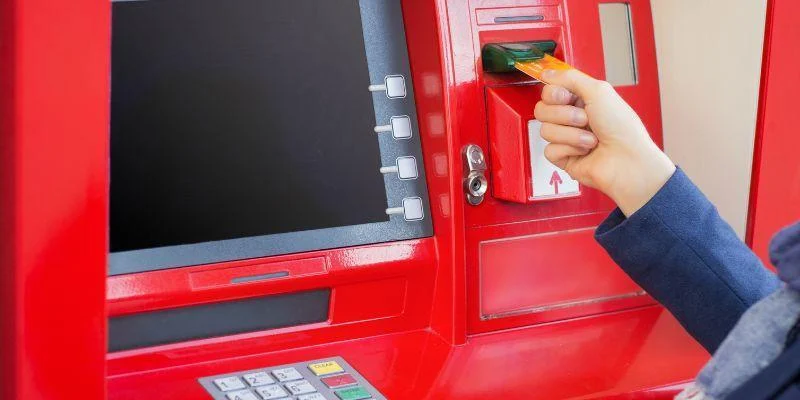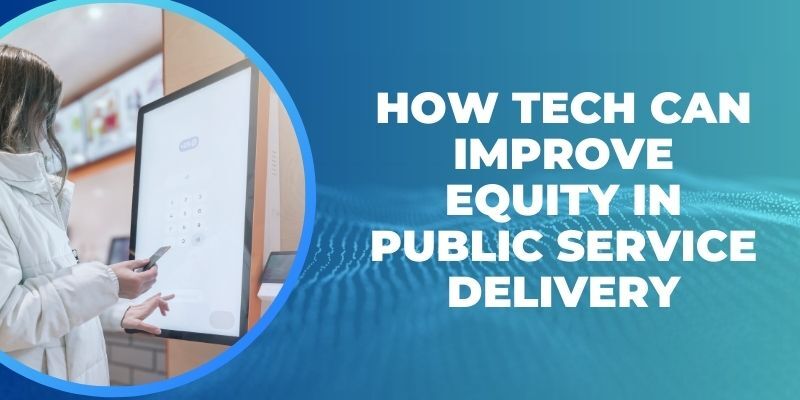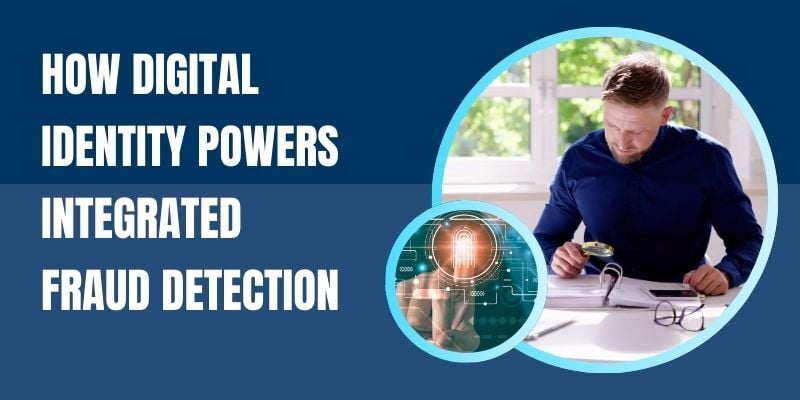Companies increasingly focus on phygital strategies to drive growth and increase customer engagement in today’s fast-paced business environment.
By merging physical and digital experiences, businesses can create memorable interactions that resonate with tech-savvy consumers who expect convenience, personalization, and immediacy.
Understanding the phygital concept is critical for businesses aiming to stay competitive in this rapidly evolving landscape. As technology continues to blur the lines between the physical and digital worlds, adopting phygital strategies becomes not just an option but a necessity.
This article will explore what phygital customer experience truly means, examine the technologies driving this trend, and look at real-world examples of phygital implementations.
We will also discuss emerging phygital trends and why businesses must adopt this approach to thrive in the modern marketplace.
What is Phygital?
The term phygital represents the smooth blend of physical and digital experiences, where businesses create unified interactions that take advantage of both domains.
By combining the tangible aspects of the physical world with the convenience and reach of digital technology, phygital experiences cater to the modern consumer’s demand for smooth, personalized, and immediate interactions.
Key elements of a phygital experience include:
- Immediacy: Quick and effortless access to services or products, whether online or in-store. For instance, using a mobile app to place an order and pick it up at a nearby location merges the digital speed with the physical convenience of a store. This is a prime example of a phygital experience that resonates with customers.
- Immersion: Engaging and memorable experiences that captivate the customer. An example might be an in-store augmented reality display that allows customers to visualize a product’s appearance in their home before purchasing. This element of phygital technology enriches the physical experience with digital enhancement.
- Interaction: Flawless transitions between physical and digital touchpoints. For example, a customer could research a product online, try it in a store, and complete the purchase through a mobile app. These touchpoints should offer a consistent and connected experience, vital in a phygital world.
These elements come together to form the backbone of a successful phygital customer experience, ensuring that businesses meet the evolving expectations of today’s consumers.
The Benefits of Phygital
 Adopting a phygital approach offers numerous advantages for businesses looking to succeed in today’s competitive landscape.
Adopting a phygital approach offers numerous advantages for businesses looking to succeed in today’s competitive landscape.
By merging physical and digital experiences, companies can create more engaging and satisfying customer interactions.
This can lead to significant benefits such as greater customer engagement and loyalty, improved operational efficiency, increased revenue opportunities, and competitive differentiation.
1. Enhanced Customer Engagement and Loyalty
Engaging with customers profoundly is one of the most significant benefits of implementing a phygital customer experience.
By combining the immediacy and convenience of digital platforms with the tactile, personal touch of physical interactions, businesses can create memorable experiences that resonate with customers. This blend attracts new customers and promotes loyalty among existing ones.
For instance, a retail brand integrating a digital loyalty program with in-store experiences can encourage repeat visits and higher spending.
Customers might receive personalized offers on their mobile devices while browsing in-store or earn rewards points for online and in-store purchases. These integrated experiences make the customer feel valued and understood, which is key to building long-term loyalty.
2. Improved Operational Efficiency
Another significant advantage of a phygital experience is the improvement in operational efficiency. Phygital strategies enable businesses to rationalize processes by leveraging technology to improve physical operations.
For example, using digital tools to manage inventory, track customer preferences, or automate checkouts can reduce wait times and minimize errors, leading to a smoother, more efficient operation.
In the hospitality industry, hotels using phygital solutions can offer self-check-in kiosks, allowing guests to bypass the front desk and head straight to their rooms.
This speeds up the process and frees staff to focus on more personalized customer service, improving overall efficiency and customer satisfaction.
Additionally, companies can gain insights into customer behavior by analyzing physical and digital touchpoint data, allowing for more informed decision-making and resource allocation.
3. Increased Revenue Opportunities
A well-executed phygital strategy can open up new revenue streams by offering customers more ways to engage and purchase.
Integrating physical and digital experiences allows businesses to reach customers where they are most comfortable, whether online, in-store, or a combination of both. This flexibility can lead to higher sales and increased average transaction values.
For example, a clothing retailer might use augmented reality (AR) in its app to let customers try on outfits virtually before visiting the store.
When customers visit, they can quickly find and purchase the items they’ve already explored digitally, often adding more to their carts based on the in-store experience.
Moreover, by providing multiple purchase options, such as buy online and pick up in-store (BOPIS), businesses can cater to a broader audience, ultimately driving more sales.
Phygital experiences also create opportunities for upselling and cross-selling. By tracking a customer’s journey across physical and digital touchpoints, businesses can provide personalized recommendations that are more likely to result in additional purchases.
For instance, after buying a pair of shoes online, a customer might receive a suggestion to pick up matching accessories during their next store visit, increasing the likelihood of an additional sale.
4. Competitive Differentiation
In an increasingly saturated market, businesses must find ways to stand out. Phygital technology offers a unique avenue for differentiation by providing customers with innovative and smooth experiences that competitors may not offer.
Companies that effectively blend the physical and digital worlds can position themselves as industry leaders, setting the standard for customer experience in their sector.
For example, a restaurant that uses a phygital approach by offering a digital menu accessed via a QR code on the table and the ability to place orders directly from a smartphone can improve the dining experience.
This reduces wait times and allows for personalized menu suggestions based on previous orders, creating a more tailored experience that sets the restaurant apart from others.
Additionally, phygital experiences can help businesses respond quickly to changing market conditions and customer preferences.
By continuously integrating new digital tools and technologies into their physical operations, companies can more effectively stay ahead of trends and adapt to evolving customer expectations than their competitors.
5. Better Data Collection and Analytics
Another crucial benefit of implementing a phygital experience is the increased ability to collect and analyze data across multiple touchpoints.
By integrating physical and digital interactions, businesses can gather comprehensive data on customer behaviors, preferences, and purchasing patterns. This data can then be used to optimize marketing strategies, personalize customer interactions, and improve product offerings.
For instance, a retailer that tracks online and in-store customer activity can gain insights into how digital browsing influences in-store purchases or vice versa.
This level of data integration allows for more precise targeting and retargeting efforts, which can lead to increased conversions and higher customer lifetime value.
Moreover, with better data, businesses can make more informed decisions, reducing risks and improving the overall customer experience.
What Impact Does Phygital Have on the Customer Experience?
Phygital is revolutionizing how customers interact with brands by merging the physical and digital worlds into a cohesive experience. This transformation improves personalization, convenience, and engagement, making the overall phygital customer experience more impactful and satisfying.
- Personalization: Through phygital technology, brands can collect and analyze customer data from physical and digital touchpoints. This allows for highly personalized interactions, such as customized recommendations in-store based on online browsing behavior. This blend of physical and digital experiences makes customers feel more understood and valued.
- Convenience: By integrating digital convenience with physical access, phygital experiences offer customers greater flexibility. Services like buy online, pick up in-store (BOPIS), or curbside pickup exemplify how the phygital world caters to modern consumers’ demand for quick and easy transactions.
- Engagement: The immersive nature of phygital experiences, such as augmented reality (AR) or in-store interactive digital displays, keeps customers more engaged. These phygital trends make the shopping journey more enjoyable and memorable, strengthening the connection between the customer and the brand.
Four Steps to Adapting a Phygital Strategy
 Successfully adopting a phygital customer experience requires a strategic approach that effortlessly integrates physical and digital elements. Here are four essential steps to effectively help businesses transition to a phygital strategy.
Successfully adopting a phygital customer experience requires a strategic approach that effortlessly integrates physical and digital elements. Here are four essential steps to effectively help businesses transition to a phygital strategy.
1. Assess Current Customer Touchpoints
The first step in adopting a phygital strategy is to assess your existing customer touchpoints. Start by identifying all the physical and digital experiences your customers interact with, such as in-store visits, online shopping, social media, and customer service channels.
Understanding where these touchpoints occur allows you to see where physical and digital interactions exist and where they can be integrated.
Next, analyze customer behavior and preferences across these touchpoints. Look at how customers move between physical and digital channels and identify patterns in their behavior.
Understanding these preferences will help you determine which areas to focus on as you build a more cohesive phygital experience.
2. Develop a Phygital Roadmap
Once you have assessed your current touchpoints, developing a phygital roadmap is next. Begin by prioritizing key initiatives that will have the most significant impact on your phygital customer experience.
For example, you might decide to augment your in-store experience with digital tools or improve your online platform to complement in-store visits better.
Allocate resources and set realistic timelines for these initiatives. This involves budgeting for new technologies, training, and marketing efforts and establishing a clear timeline for implementation.
A well-planned roadmap ensures that your phygital strategy is practical and achievable, setting the stage for successful execution.
3.Implement Phygital Solutions
With a roadmap, it’s time to implement the necessary phygital solutions. Deploy phygital technology that bridges the gap between physical and digital experiences, such as augmented reality (AR) in-store displays, mobile apps that boost the shopping experience, or digital kiosks that provide personalized recommendations.
Additionally, train your employees on phygital best practices. Staff should understand how to use the new technologies and be able to guide customers effortlessly between physical and digital touchpoints.
Well-trained employees must ensure that your phygital world operates smoothly and effectively.
4. Continuously Optimize and Improve
Optimizing and improving continuously is the final step in adopting a phygital strategy. Gather customer feedback regularly to understand how well your phygital initiatives are working.
Use this feedback, along with performance metrics, to assess the effectiveness of your phygital experiences.
Make data-driven decisions to improve the phygital experience. Whether refining an existing touchpoint or introducing new technologies, ongoing optimization ensures your strategy evolves with changing customer needs and phygital trends.
This continuous improvement approach will help you stay ahead in the competitive market and provide a consistently high-quality customer experience.
Examples of Phygital
 Phygital experiences are becoming increasingly prevalent across various industries as businesses seek to create more engaging and unified interactions by blending physical and digital elements.
Phygital experiences are becoming increasingly prevalent across various industries as businesses seek to create more engaging and unified interactions by blending physical and digital elements.
Below are examples of how sectors adopt phygital customer experiences to augment service delivery and meet evolving consumer expectations.
1. Retail
The retail sector has been at the forefront of integrating phygital technology to boost the shopping experience, blending in-store and online interactions to cater to modern consumer demands.
- Smart Mirrors: One of the most innovative examples in retail is using intelligent mirrors. These in-store mirrors allow customers to try on clothes virtually, without physically changing into them. By combining digital imaging with a physical mirror, customers can see how different outfits look on them in real time, offering a convenient and personalized shopping experience.
- Interactive Displays: Many retailers are now incorporating interactive displays in their stores. These touchscreen displays provide customers with detailed product information, reviews, and recommendations based on their preferences. This allows customers to make more informed purchasing decisions and heightens their in-store experience by bridging the gap between online research and physical shopping.
- Click-and-Collect: Another common phygital strategy in retail is the click-and-collect model. Customers order products online and pick them up in-store at their convenience. This approach combines the ease of online shopping with the immediacy of physical retail, offering customers the best of both worlds.
2. Banking
The banking sector has also adopted phygital experiences to improve customer service and streamline operations.
As customers increasingly demand quick and convenient access to financial services, banks are integrating physical and digital elements to meet these expectations.
- Digital Kiosks: Many bank branches now feature digital kiosks that allow customers to perform various transactions, such as depositing checks, transferring funds, or accessing account information. These kiosks reduce the need for in-person teller interactions, speed up service, and allow staff to assist with more complex inquiries.
- Mobile Apps with Augmented Reality (AR): Some banks are leveraging AR within their mobile apps to boost customer engagement. For example, customers can use AR to visualize financial data, such as seeing a 3D representation of their spending habits or locating nearby ATMs by scanning their surroundings with their smartphone camera. Integrating physical space with digital tools offers a more immersive and interactive banking experience.
3. Events and Entertainment
The events and entertainment industry is increasingly using phygital experiences to create immersive and interactive experiences that blend the excitement of live events with the reach and innovation of digital technology.
- Virtual Concerts: A significant trend in entertainment is the rise of virtual concerts. These events combine live performances with virtual reality (VR) technology, allowing fans to experience concerts from the comfort of their homes. By wearing VR headsets, attendees can feel as if they are part of the crowd, enjoying the same atmosphere and energy as a live event. This phygital approach expands access to concerts, reaching audiences who might not be able to attend in person.
- Interactive Art Exhibits: Museums and galleries also embrace phygital strategies by creating interactive art exhibits. These exhibits blend physical art pieces with digital technology, such as AR overlays that provide additional information or animations related to the artwork. Visitors can use their smartphones or provided devices to interact with the art, making the experience more engaging and educational.
4. Healthcare
The healthcare industry is leveraging phygital technology to improve patient care and rationalize operations, making healthcare services more accessible and efficient.
- Telemedicine Stations: One of the critical examples of phygital in healthcare is the use of telemedicine stations. These are physical booths or stations equipped with digital tools that allow patients to have remote consultations with healthcare providers. Patients can access medical care from a distance while benefiting from some in-person elements, such as vital sign monitoring at the station. This integration is particularly valuable in rural or underserved areas where access to healthcare can be limited.
- Patient Check-In Systems: Hospitals and clinics increasingly use digital check-in systems to ease patient intake. Upon arrival, patients can check in using a tablet or kiosk, reducing wait times and minimizing the need for direct contact with administrative staff. These systems often integrate with electronic health records, ensuring patient information is accurately captured and readily available to healthcare providers.
5. Automotive
The automotive industry is harnessing the power of phygital technology to boost the car buying and ownership experience, making it more interactive and customer-centric.
- Virtual Showrooms: Car dealerships increasingly use virtual showrooms to showcase their vehicles. Customers can explore and customize cars through VR or AR technology without visiting a physical showroom. They can view different models, change colors, and even take virtual test drives from their homes. This approach not only improves the shopping experience but also expands the dealership’s reach to customers who may be located far from a physical location.
- Connected Cars: Modern vehicles now have digital interfaces that offer navigation, entertainment, and diagnostic tools. These connected cars integrate digital technology with the physical driving experience, providing drivers with real-time information and services. For example, a car’s interface might suggest nearby restaurants based on the driver’s preferences or alert the driver to potential mechanical issues before they become serious problems.
6. Education
Education is another sector where phygital experiences are making a significant impact, developing learning by combining traditional and digital methods.
Smart Classrooms: In smart classrooms, digital whiteboards, tablets, and interactive learning tools are used alongside traditional teaching methods to create a more dynamic learning environment. These classrooms allow teachers to present information more engagingly and enable students to interact with the material through hands-on digital activities. For instance, a teacher might use a digital whiteboard to display an interactive map that students can explore to learn about geography.
Blended Learning: Blended learning combines online educational materials with traditional in-person teaching. This approach allows students to learn at their own pace through digital platforms while benefiting from face-to-face interactions with teachers and peers. For example, students might watch instructional videos at home and then participate in hands-on activities in the classroom, applying what they’ve learned in a more interactive setting.
What’s the Future of Phygital?
Emerging trends and technologies will shape the future of digital experiences, further blurring the lines between the physical and digital worlds.
Innovations like the Internet of Things (IoT), 5G connectivity, and advanced artificial intelligence (AI) will enable even more seamless and personalized interactions.
For example, IoT devices will allow real-time data exchange between physical products and digital platforms, creating dynamic experiences such as smart homes that automatically adjust to user preferences.
Additionally, 5G will support faster, more reliable connections, making augmented reality (AR) and virtual reality (VR) more accessible and integrated into everyday life.
To stay ahead of the curve, businesses must continuously monitor these phygital trends and be ready to adapt. This involves investing in new technologies, experimenting with innovative customer engagement strategies, and maintaining a customer-centric approach.
Companies should also focus on gathering and analyzing data to better understand customer behaviors and preferences, enabling them to tailor phygital experiences that are relevant and compelling.
By staying agile and embracing the latest phygital technology, businesses can meet and exceed customer expectations, delivering exceptional and memorable experiences that nurture loyalty and drive growth in an increasingly connected world.
FAQs
How does Phygital impact omnichannel marketing efforts?
Phygital boosts omnichannel marketing by effortlessly integrating physical and digital touchpoints, ensuring a consistent and personalized customer experience across all channels. This approach helps brands engage with consumers more effectively, increasing loyalty and higher conversion rates.
What are the trends in Phygital technology for the upcoming years?
Emerging trends in phygital technology include the rise of the Internet of Things (IoT), 5G connectivity, and advanced AI, enabling more personalized, immersive, and real-time experiences. These technologies will further blur the boundaries between the physical and digital worlds, creating more seamless customer interactions.
How does Phygital influence consumer behavior and purchasing decisions?
Phygital influences consumer behavior by offering more convenient, engaging, and personalized shopping experiences. Integrating digital tools within physical spaces helps customers make informed decisions, increases satisfaction, and encourages repeat purchases.
How is Phygital transforming the retail industry?
Phygital is revolutionizing retail by merging online and offline experiences through smart mirrors, interactive displays, and click-and-collect services. This integration adds to the shopping journey, making it more engaging and tailored to individual customer preferences.
Conclusion
In the examples discussed, we’ve seen how various industries—retail and banking to healthcare and education—adopt phygital customer experience to blend physical and digital interactions smoothly.
These strategies increase engagement and offer convenience and personalization, creating memorable experiences for customers.
The benefits of adopting a phygital strategy are clear: improved customer satisfaction, increased loyalty, and a stronger competitive edge. By integrating digital technology into physical spaces, businesses can deliver more dynamic and responsive customer interactions.
As the market continues to evolve, exploring and implementing phygital customer experiences is crucial for businesses aiming to stay ahead. Adopting these strategies will meet consumers’ changing consumer expectations and position companies for sustained growth and success.
BOOK A FREE DEMO





